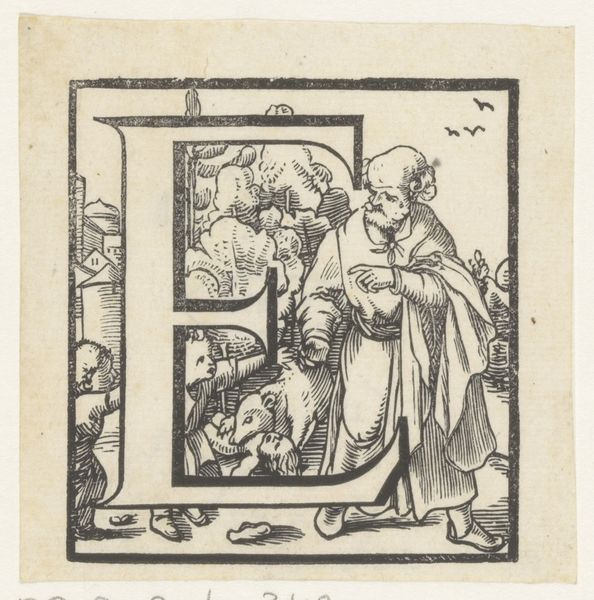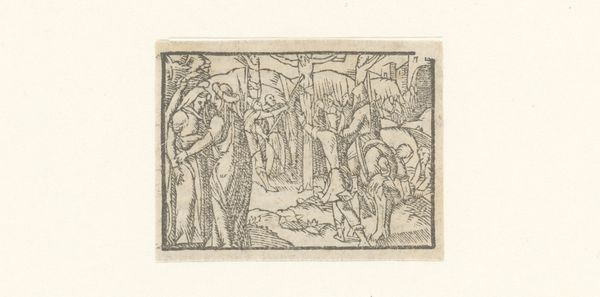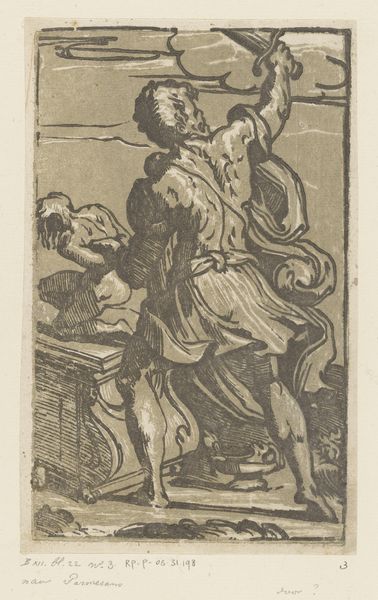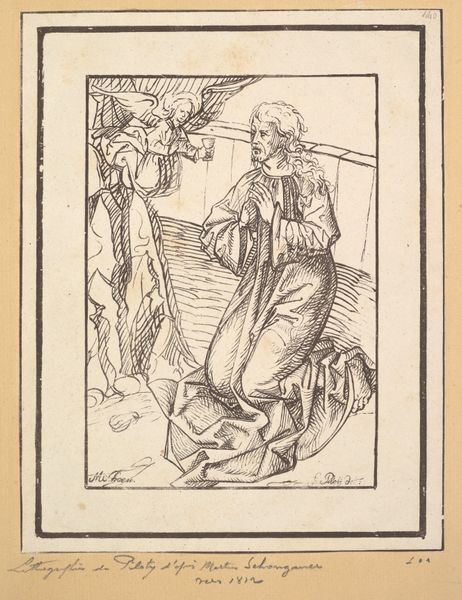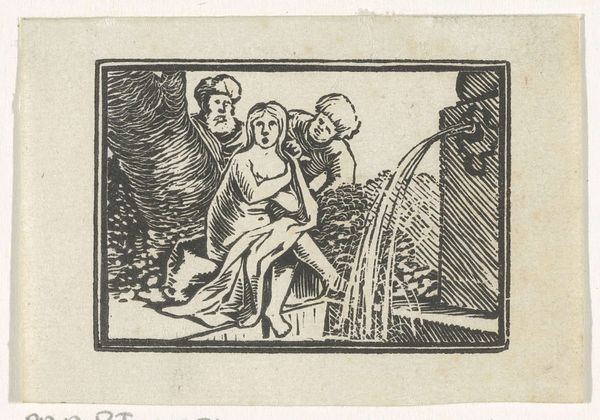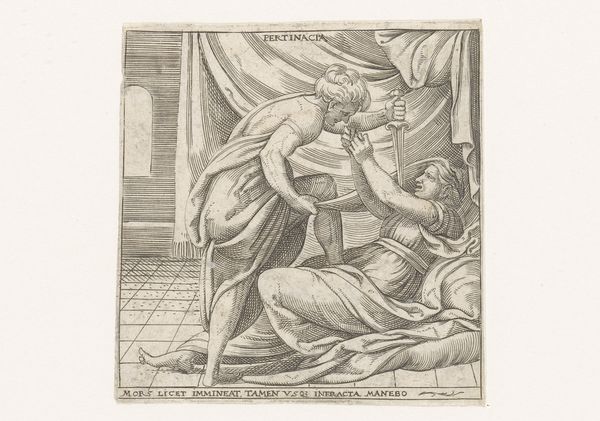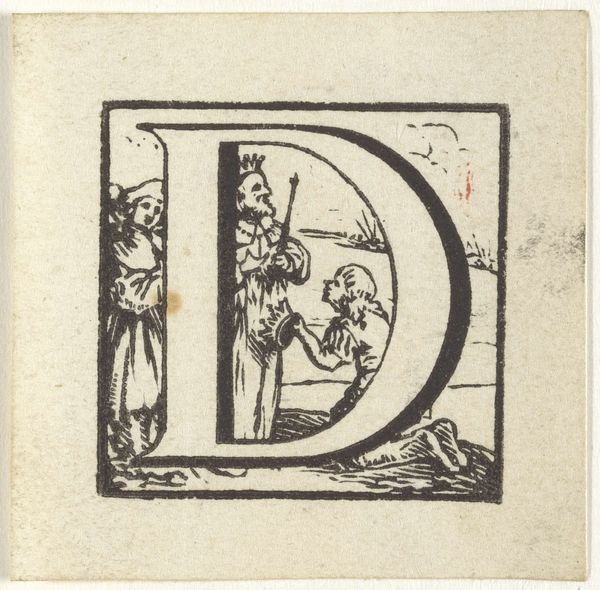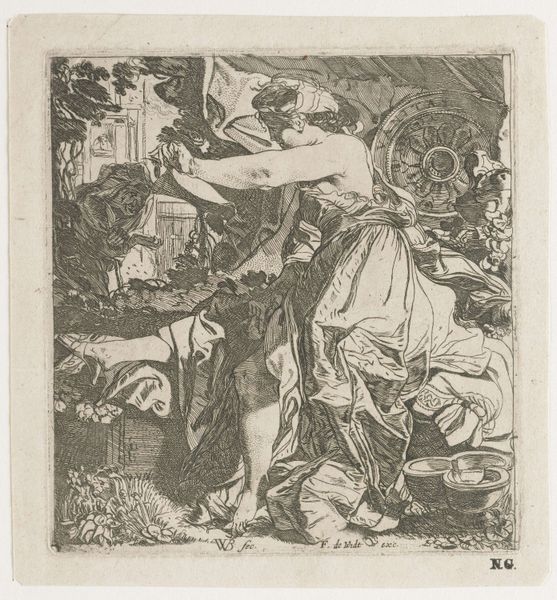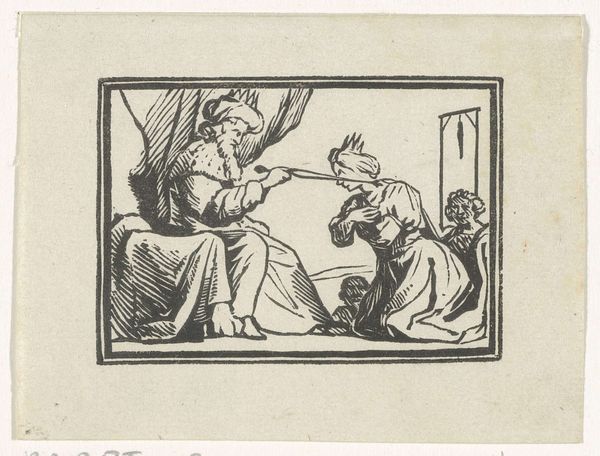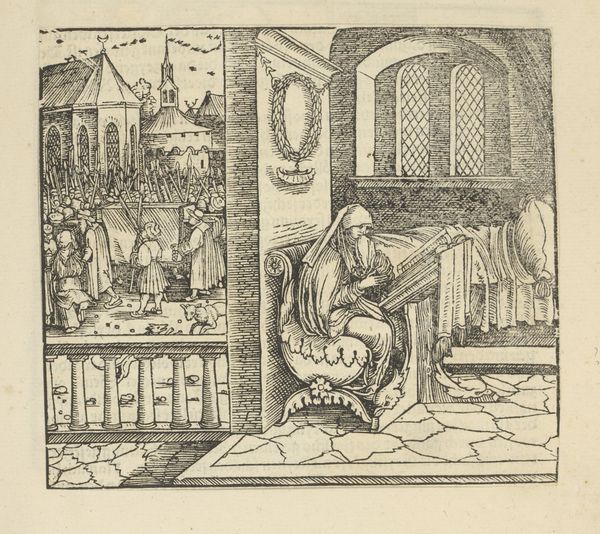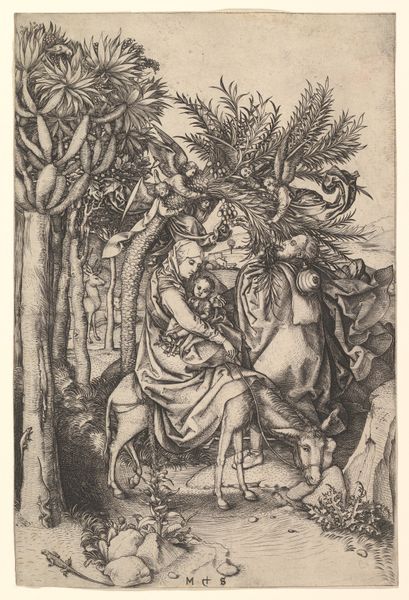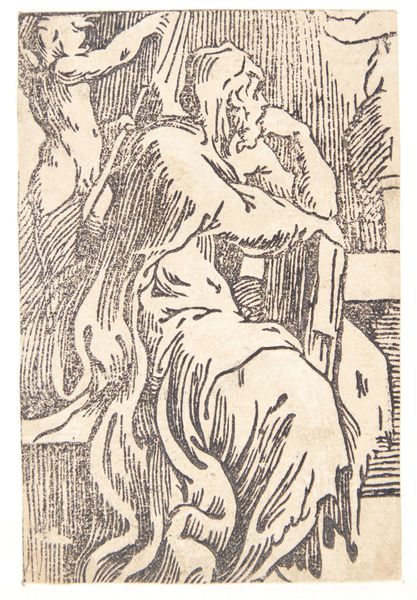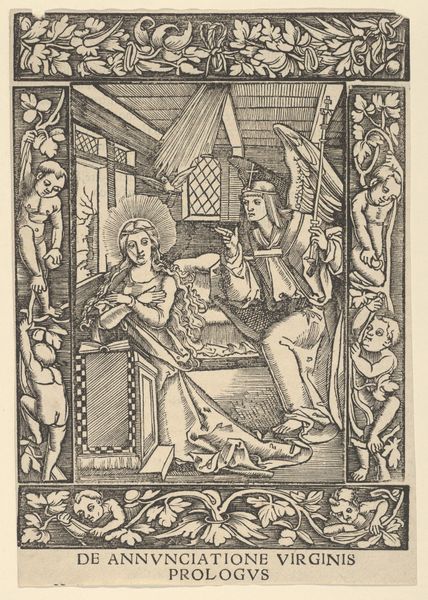
Letter J in een omlijsting met een voorstelling van de kuisheid van Jozef als hij vlucht voor de vrouw van Potifar 1635 - 1694
0:00
0:00
print, engraving
#
baroque
# print
#
pen sketch
#
old engraving style
#
figuration
#
history-painting
#
nude
#
engraving
Dimensions: height 56 mm, width 55 mm
Copyright: Rijks Museum: Open Domain
Curator: Look at the stark contrast of black ink on white paper in this Baroque engraving; Dirck de Bray created this initial "J" somewhere between 1635 and 1694. The scene depicted within the letter seems fraught with tension. Editor: Yes, my immediate feeling is one of conflict. The heavy lines and sharp angles contribute to a sense of urgency and potential danger, like a moment frozen right before everything changes. There's almost a claustrophobic energy to it despite its small scale. Curator: The artwork tells the story of Joseph fleeing Potiphar's wife. The figure to the left is, in fact, the wife, reaching out from her bed, while Joseph hastily retreats to the right, cloak billowing behind him. This subject was frequently used to signify virtue overcoming temptation, a popular theme during that time. Editor: Virtue presented through such a sexually charged dynamic—it's always interesting to examine how morality gets visually encoded. Here, the active, even aggressive, female figure challenges typical representations of passive female desire versus active male rejection. Joseph’s elaborate costume, however, speaks of societal status, power structures that frame this "virtuous" rejection. It is no small thing for someone of presumably low status to resist someone like that. Curator: The placement of these figures inside a letter transforms it beyond mere decoration. The letter "J" itself becomes a frame, containing not just narrative, but also an encapsulated moral lesson. Letters within illuminated manuscripts or printed pages were understood as containers of power. What do you see here in terms of societal symbolism? Editor: Considering this was produced in the Dutch Golden Age, there's an intriguing interplay between religious morals and commercial wealth. The scene can be viewed through a post-colonial lens; this narrative serves to legitimize hierarchies inherent in mercantilism and patriarchal power. We tend to see such art removed from an immediate context of classism and even enslavement as Dutch trade expanded its reach across the globe, requiring justification for their societal structure back home. Curator: Your insights underscore the enduring power of visual narratives to convey complex ideas. That is why considering not only the symbolism but the very letter, what the picture is placed in and framing it, makes all the difference. Editor: Precisely! That is where its context becomes a very modern way of seeing these narratives that would otherwise stay framed only by a historically "correct" interpretation.
Comments
No comments
Be the first to comment and join the conversation on the ultimate creative platform.
